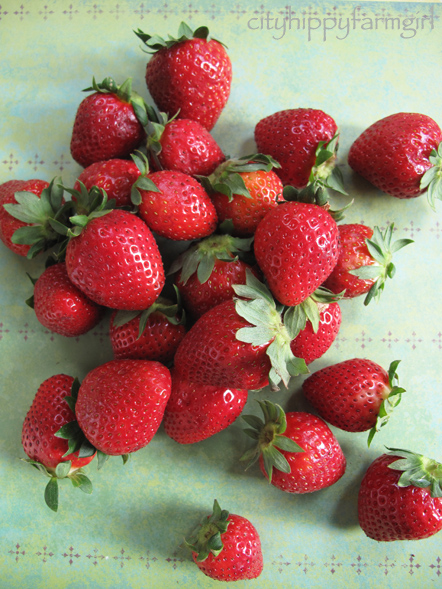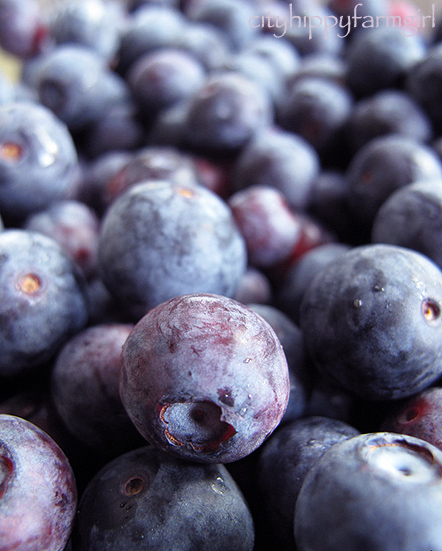I love making jams and marmalades. For me it’s the perfect way to preserve the season. Vanilla Plum Jam- a gentle reminder of hot summer days in a jar, when eaten in the cool of winter. Tarty Citrus Marmalade- Autumn love and enjoyed every week of the year on my sourdough toast.
I started making jam and marmalades back when I was a teenager. I’d watched my mum do it countless times and just learnt by watching. A couple of decades on and I still happily make my preserves although I’m not particularly good at why I do certain things, I just do.
For this reason I thought I would do a Q and A on jam making, with the ever knowledgable Mariana from Thru My Kitchen Window. Mariana’s pantry is the kind of pantry I would quite happily raid any night of the week. Those darkened shelves, I know would be lined full of beautifully made preserves. Made with a basket full of love and knowledge, (which is a pretty awesome combination when it comes to cooking.)
Jammin’ with Mariana @ Thru My Kitchen Window
Q: What is the best kind of fruit to jam and do I use over ripe, or under ripe fruit?
A: Fruits that grow successfully or are native to the area where you live. Apples would be an exception; for example I live in SE Qld and I source my apples at the local farmers market. The apple growers are from Stanthorpe (over two hundred kms away) and I know the apples were picked up to three days before market. Under ripe or close to just being ripe are the best fruit to use in jamming.
Q: What is pectin, why do I need it and which fruit has the most? Can I use that packet stuff that says Jam Setter?
A: Pectin can be a hard thing to understand until you’ve worked with quite a number of fruits; at least it was for me. I would describe pectin as a ‘gummy-like substance’ that oozes from the fruit while it’s simmering. Adding lemon juice to simmering fruit helps to further release the pectin. Pectin levels are different in every fruit, eg; apples are high; strawberries are low. Preserve books generally contain information about the pectin levels in most fruits; consult them or the net and use as a guide to help you achieve the best setting. It’s worth noting that once you add the sugar to the fruit you are no longer enabling the pectin to release; so do not add sugar until you’re happy with the softness or firmness of the fruit. You may think the rind in your marmalade is very soft, but once the sugar is added it actually assists in toughening the skin, so don’t be afraid to cook down fruit with rind, unless of course you like a firm rind. The sugar will cook with the available pectin to form a gel or set; you may need to persist a few times till you get the setting right. Don’t give up, it’s all learning.
I’ve made and used my own liquid pectin stock. It’s very good; but some of the gels have been too firm so in future I’d only use it with poorer pectin fruits if at all.
I don’t use packet jam setter so I can’t comment on that one. I’ve heard that these setting agents can reduce the intensity of the flavour in the fruit. However if you’re new to jam-making then anything that will help to boost your confidence in setting the jam can’t be such a bad thing.
Q. How long do I cook it for? Is timing the same for every fruit or does it vary?
A. Cooking times for jams all vary, for example strawberry jam could take 5mins to simmer and another 5 or 10mins for setting, whilst for strawberry and apple jam, simmering could take 20mins till the apples are soft and up to another 20mins till it jells. It’s all approximate unfortunately as so many factors depend on the condition of the fruit. For instance if you use overripe strawberries you’ll most likely end up with a strawberry sauce with very little chance of setting. Unblemished, just-ripe strawberries will in the same cooking time will give you a much better jam result.
Q.What’s the saucer test, and how do I know when it’s ready? Also, I’ve heard about jam getting wrinkly, what does that mean?
A. I used to do the saucer test. Basically it’s to test how well the jam is jelling. Place a teaspoon of the jam onto a chilled saucer that’s been in the fridge. Allow a couple of minutes to cool. Then with your finger gently push the jam from one side to see if it ‘wrinkles’. If it does then your jam has reached setting point; cease any further cooking. If it doesn’t wrinkle then presumably it needs more cooking.
These days I use my wooden spoon to determine the setting of my jam, jelly or marmalade. Dip the spoon into the centre of the saucepan and slowly lift the spoon well above the pot. Tilt and watch how the liquid drips back into the mixture. If it runs off quickly, then keep cooking. When a setting point is reached, the jam should fall off the spoon in small clumpy teardrops . I much prefer using this method than the saucer test but it does take practise to recognise the signs.
Q.Skimming scum off the top doesn’t sound very pleasant, do I need to do that?
A. Yes. It’s unavoidable that some impurities will rise to the top as it should. This is a good thing. Take a metal spoon and skim away from the sides. Don’t attempt to skim from the centre of the pot; you’ll scald yourself. With some fruits there’ll be lots of scum while hardly any with others. Generally cooking the whole fruit albeit chopped, will produce greater scum. This is usually the case for jelly-making, and even more important to remove because jellies can be quite transparent and therefore the clarity depends on how well you skim the scum away during cooking.
Q. How to sterilise your jars and do I really need to? There seem to be so many different methods to do this?
A. Consult ‘canning books’ or simply ‘google’ to see recommendations on how best to sterilize. I always wash the jars and lids together in hot soapy water; rinse in boiling water, sit on a rack that’s also been placed in hot water. Arrange the jars on a baking tray bottom side down and place into a preheated conventional oven at about 80degrees; leave while the jam is cooking. Don’t put the lids in the oven till five minutes before the jam is ready. Your jars and lids should be quite ‘hottish’ just before filling. Once you’ve filled your jars, seal immediately. Place the jars side by side in a high sided tin or tray. Cover with a tea towel to help cool down slowly. I’ve yet to encounter a problem doing it this way. I read that filled jars should be reboiled for ten minutes, but I find it all so tedious and an extra step in what can already be quite an arduous task.
Q. How long does the jam keep for?
A.The greater the sugar content the longer the keeping time. If you use one cup sugar to one cup of fruit then easily a year and even up to two years. You may get some discolouration of the jam as it tends to darken a little the older it is. These days I prefer to use a ratio of between sixty or seventy five percent sugar to the fruit. In this case it’s best to use the jam between six months and up to a year. At least that’s my experience.
Q. If I have never made jam before, what might be an easy fruit to start with?
A.Choose a fruit that’s in season, one with reasonable pectin levels. Add some Granny Smith Apples – this will improve your chances for a really good set – and help your confidence for the next jam-making session. If you want to be really adventurous, go for making marmalade. You’ll have extra work with finely shredding rind, but your chances for a good setting will be excellent as citrus have high levels of pectin.
Q. And lastly, what’s your favourite jam?
A. I love a really good orange marmalade; it’s hard to beat. However; dabbling in lilly pillies and jaboticaba fruit the last couple of years has been thrilling and has produced some wonderful discoveries. And the mulberry season this year was one of the best ever. The mulberry and lime jelly I made was so intense in flavour it was unbelievable. My gifts to people turned into a nightmare! They were begging me to buy more of the stuff, so I’ll have to say mulberry jelly is my favourite. One thing it did confirm, there’s nothing quite like the taste of a home-made preserve.
************
A huge thank you to the lovely Mariana for taking the time to do this and if anyone has any other questions that haven’t been covered here, please do ask in the comments. Hopefully I, Mariana, or someone else can jump in and answer. Jam making isn’t scary or complicated, it’s following some general rules and then you are away, ready to preserve the season.







